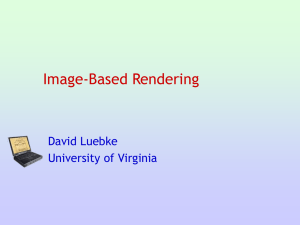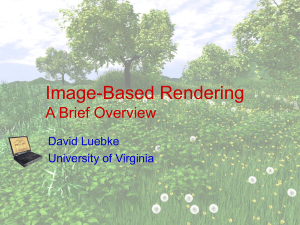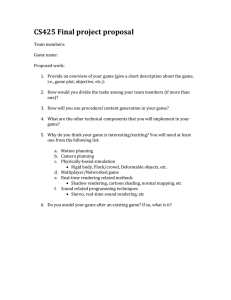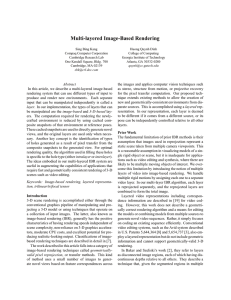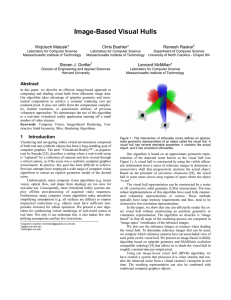Image-Based Rendering David Luebke University of Virginia
advertisement
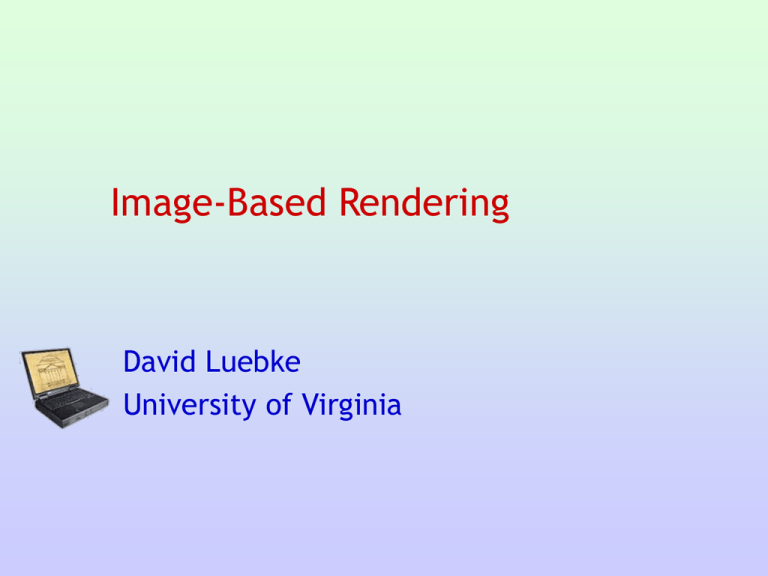
Image-Based Rendering David Luebke University of Virginia But first… A funky cactus Image-Based Rendering You’ve been learning how to turn geometric models into images – Specifically, images of compelling 3D objects and worlds Image-based rendering: a relatively new field of computer graphics devoted to making images from images Ex: Quicktime VR Images with depth Quicktime VR is really just a 2D panoramic photograph – Spin around, zoom in and out But what if we could assign depth to parts of the image? Ex: Tour Into the Picture Tour Into the Picture Software for: – Selecting parts of an image – Assigning a vanishing point for depth of background objects – Assigning depth to foreground objects – “Painting in” behind objects Depth per pixel What if we could assign an exact depth to every pixel? Ex: MIT Image-Based Editing system Depth per pixel continued What if we had a “camera” that automatically acquired depth at every pixel? Ex: deltasphere Ex: Monticello project General image-based rendering Can we do anything if we don’t have depth at every pixel? – Intuitively, if we had enough images we should be able to reconstruct new images from novel viewpoints – Even without depth information – This is the problem of pure image-based rendering A 4-D Light Field Creating Light Fields Light Field as an Array of Images Fast Rendering of Light Fields Use Gouraud Shading Hardware! Light Field Rendering Demo of Stanford viewer and light fields… View-Dependent Rendering Spectrum of rendering techniques from pure IBR to pure geometry Points in this space: – Pure IBR: light field/lumigraph – Depth-per-pixel approaches Another point: view-based rendering – Slides at: http://graphics.stanford.edu/~kapu/vbr/webslides/index.h tml
